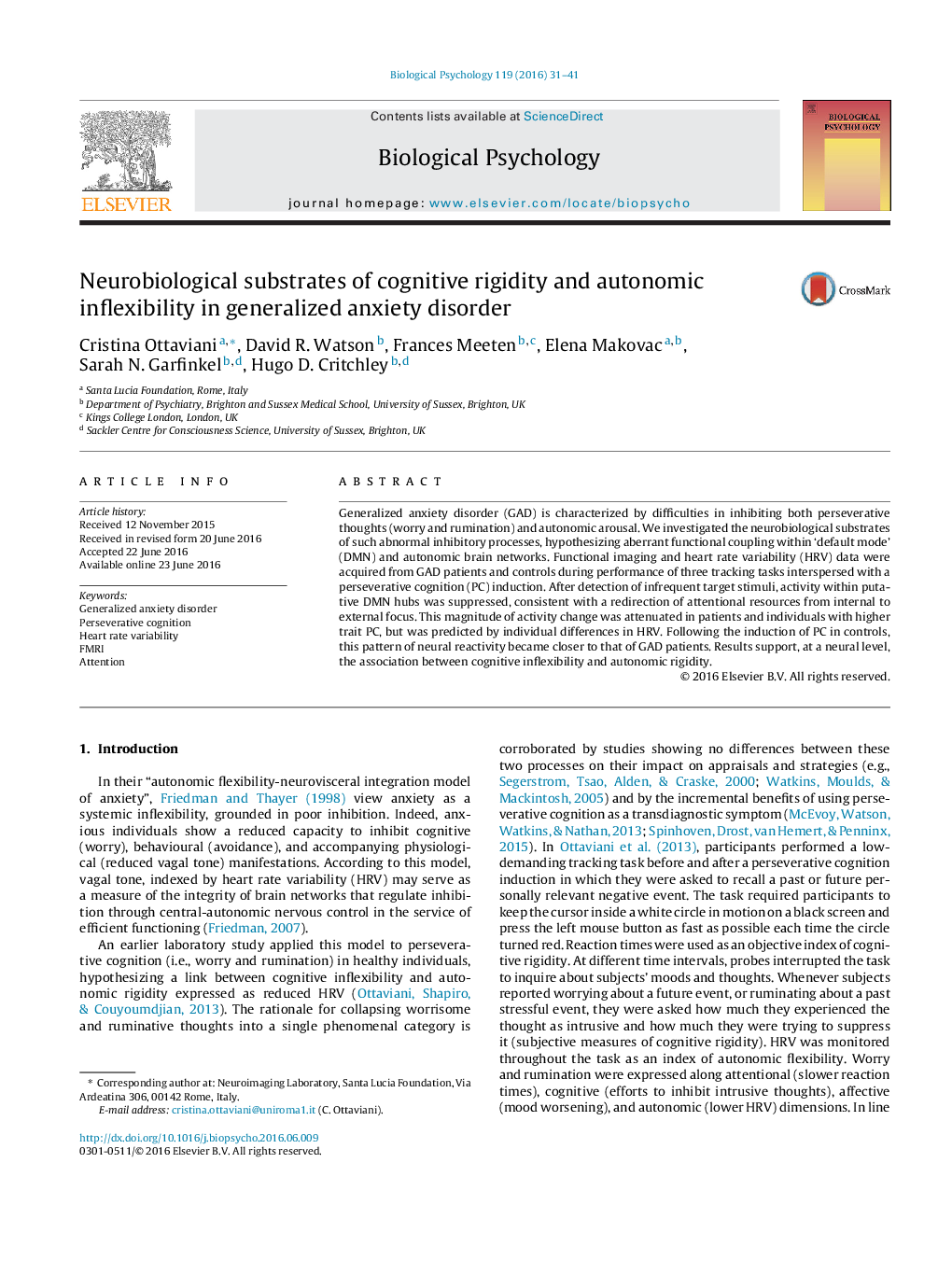| Article ID | Journal | Published Year | Pages | File Type |
|---|---|---|---|---|
| 920738 | Biological Psychology | 2016 | 11 Pages |
•Infrequent targets detection mainly deactivated default mode brain regions.•Trait worry was inversely related with prefrontal deactivation to target detection.•HRV predicted neural activation changes produced by attentional focus switching.•A worry induction increased pre- to post-target deactivation of default mode areas.•The induction reduced behavioural and neurobiological differences between groups.
Generalized anxiety disorder (GAD) is characterized by difficulties in inhibiting both perseverative thoughts (worry and rumination) and autonomic arousal. We investigated the neurobiological substrates of such abnormal inhibitory processes, hypothesizing aberrant functional coupling within ‘default mode’ (DMN) and autonomic brain networks. Functional imaging and heart rate variability (HRV) data were acquired from GAD patients and controls during performance of three tracking tasks interspersed with a perseverative cognition (PC) induction. After detection of infrequent target stimuli, activity within putative DMN hubs was suppressed, consistent with a redirection of attentional resources from internal to external focus. This magnitude of activity change was attenuated in patients and individuals with higher trait PC, but was predicted by individual differences in HRV. Following the induction of PC in controls, this pattern of neural reactivity became closer to that of GAD patients. Results support, at a neural level, the association between cognitive inflexibility and autonomic rigidity.
